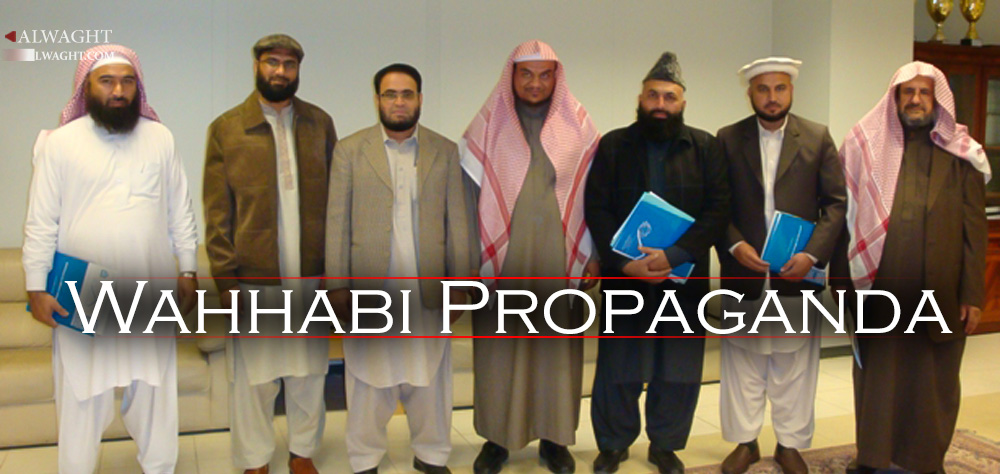Alwaght- Studying Saudi Arabia’s policies and reactions towards changes in its surrounding environment, reveals its attempts on maintaining a focus on the country, in its foreign policies.
From the formation of Saudi Arabia in the early twentieth century, this country has dealt with various threats, such as Arab nationalism in the policies of Iraq, Egypt, and Syria. The necessary measures that have been taken for these threats, shifted country’s focus from foreign policies to internal matters. From the beginning of the new century, the expansion and growth of Shiites in form of the discourse of Islamic Revolution, Axis of Resistance, and Islamic awakening or Arab spring, has caused movement and activities in the regional policies of the Saudis. By utilizing various tools and methods, Saudis were trying to manage the situation and stop the abovementioned movements from branching out to Saudi Arabia.
Supporting fanatical and extremist conservative movements such as Wahhabism, Salafism, and Deobandi -from the Southern Asian region- has been at the center of Saudi Arabia’s efforts for preserving its international and regional position. Perhaps, for the Saudi government, these actions are more related to the soft power. And maybe this is more of an existential struggle rather than a form of proselytism for the Saudis. Saudi Arabia’s focus on extreme conservatism, and its investment on similar worldviews -especially in Southern Asia- has allowed this country to rely on issuance of their own interpretations of Islam.
Since the second World War, the highest amount of public diplomacy in South Asia, has been allocated by Saudi Arabia; even more than Russia and the US. Saudis’ actions in the region have also had the most devastating effects.
Basically, the scope of Saudi activities goes beyond Salafist groups. Since they are not only related to proselytization, but are also related to soft power and geopolitical matters. These activities include, financial support for building mosques, cultural institutions, school networks, universities, publishing books, dissemination of Wahhabi literature in different languages, as well as distributing the works of scholars of various fanatic and extremist movements.
For further establishment of its activities, the Saudi government has formed various institutions. The Muslim World League, and other branches operating under it, such as al-Haramain, which was dissolved due to its connection with the September 11 attacks, or supposed Islamic universities in Medina, Malaysia, and Pakistan are part of those institutions. Saudi Arabia is funding all of them. Saudi Arabia’s method in controlling these institutions is Laissez-faire. In the way that the Saudis are rarely involved in management or direct supervision of these foreign institutions; with the exception of the Islamic University of Islamabad.
This lack of direct supervision could also be witnessed in the National Commercial Bank of Saudi Arabia. This bank was once the largest business organization in Saudi Arabia. Every account in this bank belonged to the royal family, and only three people had access to these accounts. Accounts were used under the cover of helping charitable organizations, for helping extremist groups.
Activities of Saudi Arabia affect ethnic and religious minorities, in addition they also spread sectarianism in countries such as Pakistan, Malaysia, Indonesia, Mali, Bangladesh, and Bosnia and Herzegovina. The most devastating consequences of these activities could currently be present in Pakistan. Because in addition to the intimate relations of Pakistan and the Saudis, Pakistan also utilizes military and jihadist groups for advancing its geopolitical goals. Also, Saudi Arabia considers Pakistan quite important, since Pakistan shares borders with Iran, and a quarter of its 200 million population are Shiites.
For analyzing and studying Saudis’ support of Salafi groups and their investment on propaganda, one should pay attention to patterns of friendship, enmity, and competitions, as well as threats and opportunities in the region.
Within the last decade, rivalry with Iran could be seen very clearly in Saudi Arabia’s foreign policy. Rising power of Iran, following the regional developments since 2005, has altered Saudis’ mentality to compete with Iran. Saudi Arabia is also using extremist groups as a leverage against Iran, on a regional level.
In general, supporting extremist groups or spreading the extremist mentalities under the name of promoting Wahhabism, not only is a way for Saudi Arabia to manage the regional developments, but also shows the utilization of convergent ethnicities and groups on a tactical level, in the countries of the region.



























